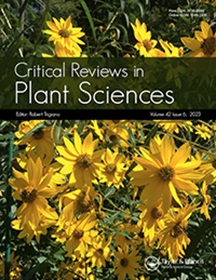A Conceptual Framework for Designing Phylogeography and Landscape Genetic Studies
IF 6
2区 生物学
Q1 PLANT SCIENCES
引用次数: 1
Abstract
Abstract Phylogeography and landscape genetics combines molecular genetics with geography, ecology, and evolutionary biology to develop an understanding of patterns in the spatial distributions of biological diversity. The two disciplines bring together advanced molecular and geospatial tools providing a critical insight on issues that are vital to the field of biogeography, including how and where biodiversity arises, how species respond to changing climates, and how and where conservation efforts should be focused. Although two fields can be considered as merely the fusion of classic biogeography with genetics and genomics, yet both differ in their level of spatial, temporal and system scales along with analytical tools utilized. At the same time, the unique combination of different scientific disciplines and methodical approaches pose a challenge to many researchers who wish to conduct a study at the interface of phylogeography and landscape genetics. A synthesis of the phylogeographic literature presented in this review solely based on the examination of studies that deals with Quaternary climatic oscillations and species’ range dynamics across the Palearctic. This review provides a comprehensive overview of the conceptual framework and recent methodological advances in two disciplines and highlights main points to be taken into account while designing a study that represents a window to the past and an opportunity to predict the fate of species due to ongoing climatic and landscape change.系统发育地理学和景观遗传学研究的概念框架
摘要系统发育地理学和景观遗传学将分子遗传学与地理学、生态学和进化生物学相结合,以加深对生物多样性空间分布模式的理解。这两个学科汇集了先进的分子和地理空间工具,对生物地理学领域至关重要的问题提供了关键见解,包括生物多样性如何以及在哪里产生,物种如何应对不断变化的气候,以及保护工作应如何以及在何处集中。尽管这两个领域可以被认为只是经典生物地理学与遗传学和基因组学的融合,但两者在空间、时间和系统尺度以及所使用的分析工具方面都有所不同。与此同时,不同科学学科和有条不紊的方法的独特结合对许多希望在系统地理学和景观遗传学的界面上进行研究的研究人员构成了挑战。这篇综述中提出的系统地理学文献的综合仅基于对整个古北极第四纪气候振荡和物种范围动力学研究的审查。这篇综述全面概述了两个学科的概念框架和最新方法学进展,并强调了在设计一项研究时需要考虑的要点,该研究代表了一个了解过去的窗口,以及预测由于持续的气候和景观变化而导致的物种命运的机会。
本文章由计算机程序翻译,如有差异,请以英文原文为准。
求助全文
约1分钟内获得全文
求助全文
来源期刊
CiteScore
12.90
自引率
1.40%
发文量
15
审稿时长
>12 weeks
期刊介绍:
Critical Reviews in Plant Sciences focuses on presenting in-depth and up-to-date reviews of timely and/or cutting-edge subjects in the broad discipline of plant science, ranging from molecular biology/biochemistry through the areas of cell biology, plant pathology and physiology, genetics, classical botany, and ecology, to practical agricultural applications. Articles in the journal provide an up-to-date literature base for researchers and students, pointing the way towards future research needs. The journal is also a significant source of credible, objective information to aid decision makers at all levels.

 求助内容:
求助内容: 应助结果提醒方式:
应助结果提醒方式:


